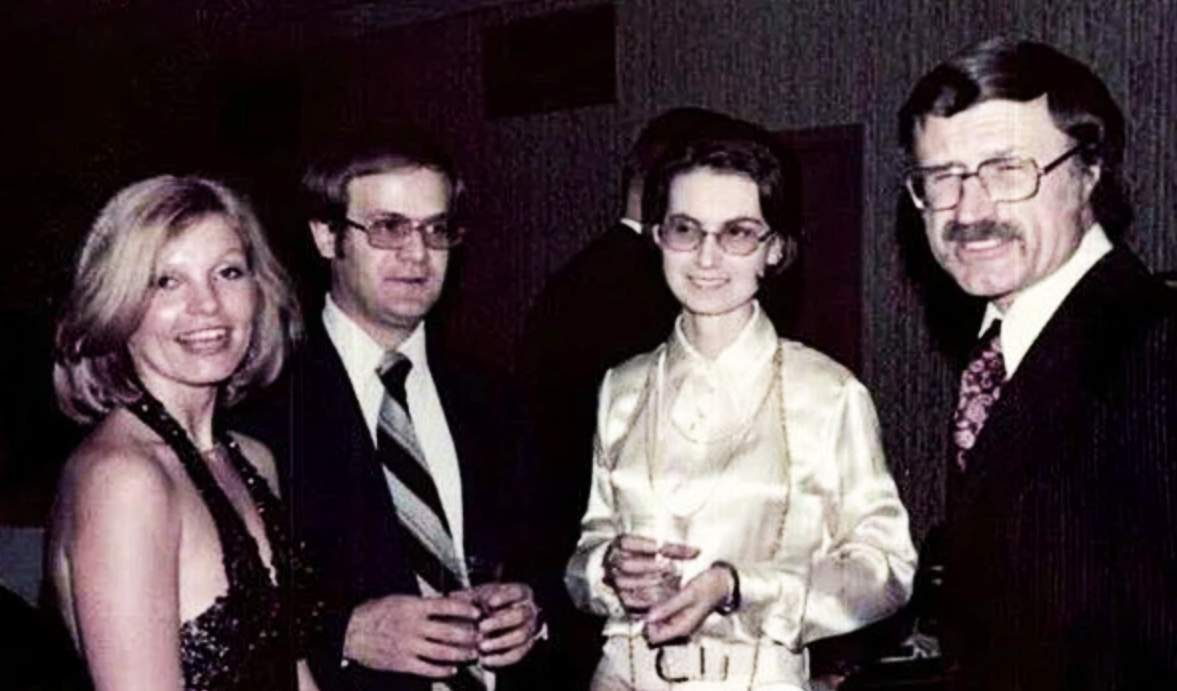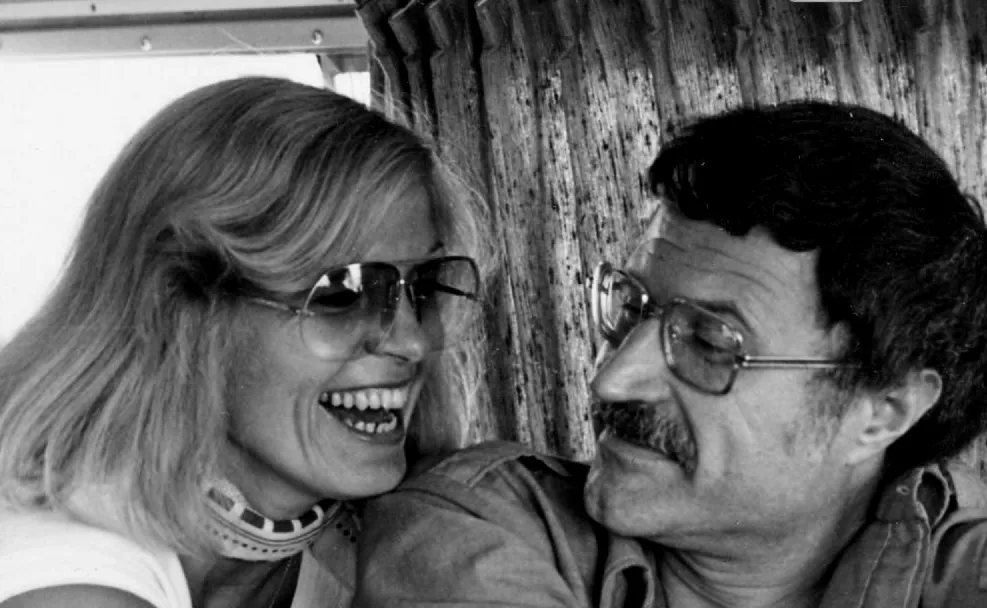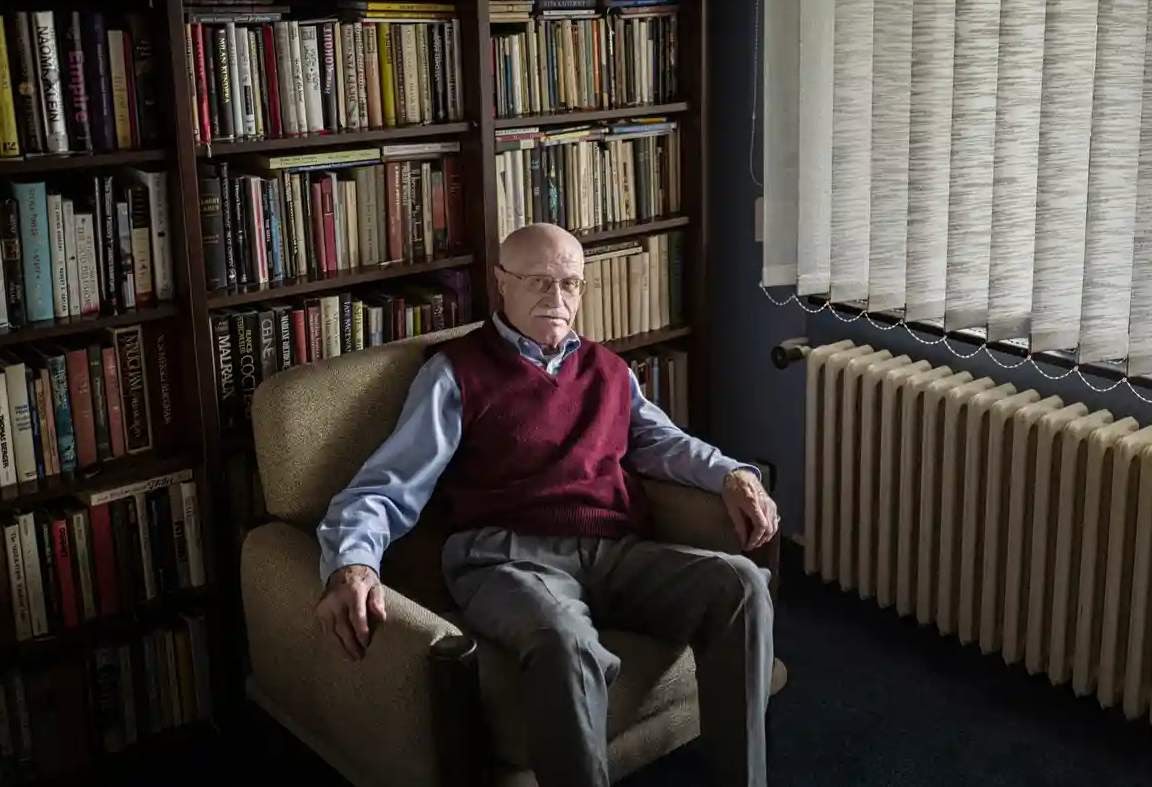Meet the Koechers: How a KGB Super-Spy Infiltrated CIA 'Swinger' Clubs
Karel ‘Karl’ Koecher and his beautiful wife Hana were an ‘it’ couple in Washington, D.C.’s social circles during the 1970s, an era marked by the Vietnam War, Watergate, sexual liberation, and women’s rights.
Karl Koecher was a Czechoslovakian intellectual born in 1934, an undercover sleeper agent who spoke four languages and was trained to beat a lie detector test. He excelled at collecting kompromat at ‘swingers’ parties where CIA officers, Pentagon officials, and at least one US Senator traded wives, according to ex-CIA officer Jonna Mendez. Hana was a decade younger than her husband.
“Hana was most attractive really, a beautiful, blue-eyed, blonde Czechoslovakian intelligence officer,” Mendez said. “She was part of a team. She and her husband came as a unit, worked as a unit, and left as a unit.”

Hana Koecher worked in the New York diamond trade, a cover story that allowed her to travel back and forth to Europe with large sums of cash. It also explained the couple’s affluent lifestyle. But how did they become two of the most important spies in US history?
"The brand new social experience where you activate your gaming skills as you train like a spy."
- TimeOut
Take on thrilling, high-energy espionage challenges across different game zones.

Koecher infiltrates the CIA
Karl and Hana Koecher started working for the Czechoslovak Intelligence Service (StB) in their 20s and Karl’ Koecher's mission was to infiltrate the CIA however possible. They married and moved to Vienna to build a cover story as two dissidents who did not support communism. By 1965, they were en route to America to find jobs. As far as the US government was concerned, that’s when their history started.
“The background check can only go back to that day you landed on US shores,” Mendez said. “CIA security does not go knocking on the doors of your next-door neighbors in Czechoslovakia.”

Spying in New York
Karl Koecher had been a comedy writer for a Czech radio show, so he leveraged his experience and language skills to join the CIA-backed Radio Free Europe. He later pursued a Ph.D. in philosophy at Columbia University in New York. Koecher’s KGB case officer, Colonel Alexander Sokolov, would later describe him as a ‘super-spy’.
The couple lived on the Upper East Side of Manhattan, a few blocks from Central Park in a glamorous condo. They counted actor Mel Brooks and Czech tennis star Ivan Lendl as neighbors. Karl Koecher wrangled a seat on the condo board to keep tabs on the comings and goings.

Spying with the Koechers
By 1972, they both had US citizenship, and by 1973 Karl Koecher also had a job at the CIA as a translator/analyst. The couple decided that D.C.’s ‘swinging’ underworld was a quick route to the top. They frequented wife-swapping parties and visited New York's Plato's Retreat and Hellfire Sex Club.
“CIA employees, at least 10 of them, were very much involved in this kind of activity,” Mendez said. “And people from the Pentagon, a US Senator, and all these high-level government officials.”
Karl Koecher passed the VIP names to his Prague and later KGB handlers for possible recruitment. One of the swingers’ groups - the ‘Capital Couples’ - met regularly at The Exchange restaurant two blocks from the White House. The hook-ups were an opportunity to gather pillow-talk intelligence but also gave Karl and Hana Koecher leverage for blackmail.
Former Washington Post journalist Ronald Kessler, author of Spy v Spy, interviewed Karl Koecher after he’d left the US and confirmed the CIA’s version of events.

Koecher climbs the ranks of the CIA
Karl Koecher excelled at work and was soon given top-secret clearance. He was assigned to the CIA division that translated telephone tape intercepts related to the recruitment of Soviets and Czechoslovakian spies.
"It's such a sensitive place for an asset to be parked, and it is just kind of amazing he got that access," Mendez said.
By 1976, the CIA suspected someone was leaking intelligence. They restricted his access and Karl was let go the following year. Some reports say he carried on working as a contractor. Others say the CIA employed him part-time. In any event, by the 1980s Karl Koecher was reactivated and still working for the Agency. No one had proven Karl was the mole - and he had friends in high places.

Hana's cover story
Hana Koecher busied herself in the diamond trade. Codenamed 'Adrid', she relayed secret communications but was never charged with espionage, according to Prague-based journalist Benjamin Cunningham who read the declassified files held by the Czech secret police.
By the time Karl Koecher told neighbors they were moving back to Europe, it was 1984. The FBI had been wiretapping known Soviet intelligence officers and Karl Koecher kept popping up on their radar, although he wasn’t on the watch list.
The FBI spotted him doing ‘brush passes’, where an agent quickly passes information to their handler. The Bureau also noted Hana Koecher conducting brush passes and Hsuspected dead drops. The FBI soon bugged their apartment, which at the time was up for sale.
The Bureau moved in before the couple could leave the US. They’d been in America for 20 years. Hana Koecher was held as a material witness. Karl Koecher was held on a charge of conspiracy to commit espionage. Promises were made in exchange for cooperation - but mistakes were also made. The FBI and CIA blamed each other and prosecutors couldn’t make the case. After almost two years, a spy exchange was arranged.

Spy swap
On February 11, 1986, Karl Koecher and his wife were part of a nine-person spy swap at Germany's Glienicke Bridge. “In intelligence circles, Koecher is known as one of the most important spies in US history,” The Washington Post reported.
Hana wore a mink coat and a white mink hat for maximum effect. Karl recalled a gold Mercedes waiting to whisk them away. “The feeling was, I am superman.”
On the Potsdam side, he drank champagne and flew back to Prague for a two-month interrogation. The couple was then allowed to move into an apartment with Karl’s mother. Goodbye, Park Avenue.
The Koechers return
Although there was a 'Welcome Home' parade and he was feted on talk shows, Karl Koecher was never really trusted. His two decades abroad bred suspicion.
To complicate matters further, Czechoslovakia dissolved into the independent countries of the Czech Republic and Slovakia in 1993. Karl Koecher lived just outside of Prague in the Czech Republic but he was born in Bratislava, the capital of Slovakia. He’d spent decades working for the KGB, the Czechoslovak Intelligence Service, the CIA, and - at one point - even volunteered to help the FBI, so whose side was he on?

Back home
In an interview with Prague journalist Benjamin Cunningham in 2016, Karl Koecher claimed that while in America he sabotaged US efforts to recruit agents in Latin America but was never responsible for anyone’s death. He was, however, linked to the 1977 suicide of Soviet diplomat Aleksandr Dmitrievich Ogorodnik, a CIA asset.
At the time of Cunningham’s interview, Karl Koecher was retired and living quietly with Hana in a village outside Prague.
As for his years in the security services, he had one final observation: “The world is really f***d up and intelligence services have a lot to do with it.”
SPYSCAPE+

Join now to get True Spies episodes early and ad-free every week, plus subscriber-only Debriefs and Q&As to bring you closer to your favorite spies and stories from the show. You’ll also get our exclusive series The Razumov Files and The Great James Bond Car Robbery!


Gadgets & Gifts
Explore a world of secrets together. Navigate through interactive exhibits and missions to discover your spy roles.
Your Spy Skills
We all have valuable spy skills - your mission is to discover yours. See if you have what it takes to be a secret agent, with our authentic spy skills evaluation* developed by a former Head of Training at British Intelligence. It's FREE so share & compare with friends now!
* Find more information about the scientific methods behind the evaluation here.


Stay Connected
Follow us for the latest
TIKTOK
INSTAGRAM
X
FACEBOOK
YOUTUBE